As children around the country head back to school, Adam Pertman shares an update to a post he initially published a few years ago. His original article on adoption in schools referenced a 2006 policy paper published by the Donaldson Adoption Institute. He laments that he didn’t have to make many changes because not much progress has been made to help educators better serve adoptive families.
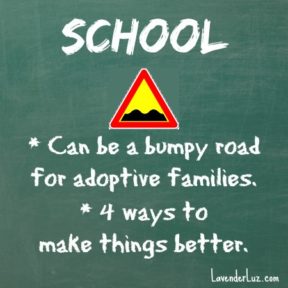
Adam Pertman: Even as adoption continues to be normalized in our country, adoptive families continue to navigate bumpy roads for their children in a place they expected mainly smooth rides: the classroom.
Adoption in Schools
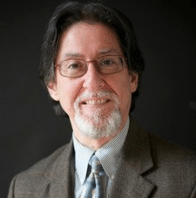 Interactions with administrators, teachers, peers and other parents can be complex and can impact adopted kids negatively on many levels. These issues range from the language used by both children and adults; to when and what to tell school personnel about the children and their pasts; and, as the children grow older, how to deal with questions related to ethnicity, birth/first parents, nationality, genealogical background and traditional lesson plans such as “family trees.”
Interactions with administrators, teachers, peers and other parents can be complex and can impact adopted kids negatively on many levels. These issues range from the language used by both children and adults; to when and what to tell school personnel about the children and their pasts; and, as the children grow older, how to deal with questions related to ethnicity, birth/first parents, nationality, genealogical background and traditional lesson plans such as “family trees.”
Teachers have a major influence on children’s understanding of the world around them — and of themselves. That’s a major reason the routine professional training of educators has come to include issues relating to race and ethnicity, disability, gender, blended families and a range of other subjects aimed at understanding diversity and promoting fair and equal treatment for all the children they teach. The intent of the preparation is not just to increase sensitivity, but also to equip teachers with knowledge that will shape their own behavior and attitudes, as well as the behavior and attitudes of their students.
Learning is the Work of Childhood
What happens at school is obviously critically important for a variety of reasons. School takes up a huge portion of children’s lives, and their experiences there help to shape their self-images, peer relationships and others’ views of their competence. It is also where they learn many of their values, accumulate most of their knowledge, and develop the skills that equip them to succeed as adults.
Learning is the “work” of childhood. For very young children, it comes primarily through play and, as they enter school, classroom learning takes up the better part of their days. It is the primary arena in which children’s performance is judged in relation to peers, and they experience pressure to perform.
There is pressure on parents to facilitate children’s adjustment at school. When girls and boys have difficulty fitting in at school or measuring up to expectations, it has real impact. Even when children perform well, their school experiences play a big role in shaping key aspects of adjustment, including self-concept, peer group experience, ability to have educational needs met to learn successfully, and the parent-child relationship (including parents’ views of their children, the stress they experience in parenting, and their feelings of competence as parents).
Identity and Stereotypes
In addition to these general influences experienced by all students, adopted children’s interactions at school — with both teachers and classmates — provide important messages that help to shape their identity as adopted persons.
While this commentary focuses primarily on adoption, the same (or sometimes comparable) issues apply to children in foster, kinship, guardian and other types of care who are not living with their families of origin. Most children in these families confront situations at school that highlight their perceived “different” status from classmates who are being raised by their biological parents.
Teachers need to be prepared with both sensitivity and knowledge about adoption in order to assist all children and their families in successfully dealing with issues. These questions and challenges may arise in class discussions, during interactions among students, and in completing assignments. Their explicit and implicit messages about adoption and/or foster care, or their lack thereof, have an impact on adopted children – and help to shape other children’s attitudes and beliefs about adoption and the people it encompasses.
Educators clearly want to do well for all the children whose lives they shape — it is the principal reason they choose teaching as their professional careers. But they receive no systematic training in two important aspects of many students’ lives: adoption and foster care. As a result, they may inadvertently use language, teach lesson plans, and/or display attitudes that can hurt children’s feelings, perpetuate inaccurate stereotypes, and transmit the message that some families (i.e. those formed through biology) are more normal and acceptable than others.
How to Help Educators
The best way to provide all children with the education and support they deserve is to make systemic changes that will have broad, permanent effects. Research and experience indicate these changes would benefit adopted and foster children:
- Education about adoption and foster care should be included in courses (such as on diversity) that are required for students in teacher education programs — as well as in professional development trainings for current teachers, psychologists, guidance counselors, social workers and other relevant school personnel.
- Studies should be conducted focusing on the outcomes of adoption-related educational programs for teachers (as well as other relevant school personnel), and the findings should be utilized to improve trainings, lesson plans, etc.
- Trainings should be developed for adoptive and foster parents on ways to advocate for their children in the schools; expert educational advocates should also be available to parents – as should access to support networks and resources such as occupational therapists, psychologists and other local, out-of-school professionals knowledgeable about adoption issues.
- Child welfare and educational organizations should collaborate to remove systemic barriers that impede the education of foster children, for example, to create policies that promote educational continuity for foster children so they do not have to change schools in the middle of a school year.
Educating educators about the realities of adoption is important as a diversity issue, because children should not be less understood or more stigmatized simply because of the type of family they happen to be in. It is a fairness issue, because adopted and foster children are sometimes derided in ways we would never accept if the taunting or stereotyping referred to other aspects of their being — such as race, gender, ethnicity, religion or disability. And it is an inclusion issue, because the knowledge gained in learning about adoptive and foster families also applies to families headed by single parents, divorced parents, step parents, gay or lesbian parents, parents of different races or ethnicities, and on and on.
In other words, doing the right thing for one group of children means doing the right thing for the majority of children.
Adam Pertman, President of the National Center on Adoption and Permanency, is among the most accomplished thought leaders in his field. Previously, he headed the Donaldson Adoption Institute and was Associate Editor of Adoption Quarterly. His books include the classic Adoption Nation, and he was nominated for a Pulitzer for his adoption writing at the Boston Globe. Pertman presents keynotes and trainings internationally, and the research he has instigated and participated in –- along with his writing, testimony and advocacy –- have helped improve/shape practice and policy. His commentaries and interviews appear in media worldwide, and his work has received numerous awards.
See also:
- Policy Perspective from the Donaldson Adoption Institute (2006)
- Sharing Your Child’s Past at School by CreatingAFamily.org
- Schools & Adoption, a Resource List by Pact, an Adoption Alliance
- School-oriented articles and webinars offered by Adoptive Families magazine (some require subscription).
Road sign via Government of Ukraine [Public domain], Wikimedia Commons.

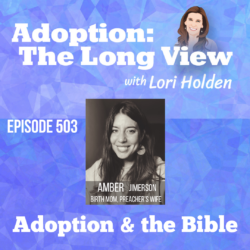
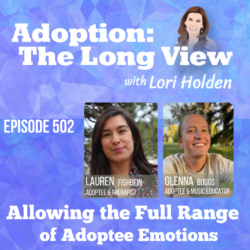
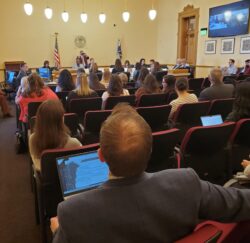
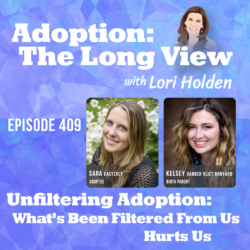

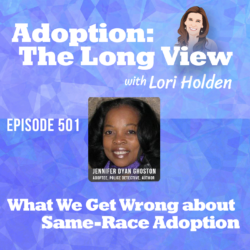
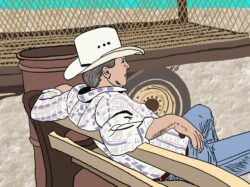
6 Responses
As you said, little has changed since he first penned these remarks. His points are still important.
Thank you for this. I would like to share it, as I am a teacher and I have seen interesting thoughts about adoption made sometimes inadvertently and sometimes just ignorantly. I am rethinking some of my own beginning-of-the-year writing assignments, thinking on how children with different origins might feel interviewing their parents/guardians/family members about their name and other early memories. I am a prospective adoptive parent, and talk openly about that in my own classrooms. I love the opportunity to educate people who have (common!) misconceptions, but it’s amazing. I had a student once tell me that “Parents don’t love their children as much in The Giver because they’re all adopted, and adopted children aren’t loved as much.” Where the heck did that come from? That started an interesting discussion for sure. Other interesting things were teachers finding out late in the year that a student was adopted and thinking that absolutely should have been disclosed earlier. Um, if it was necessary the child and/or her mom would have shared that, and it wasn’t, because they didn’t (until later). Assumptions about behavior can be interesting, too. It’s definitely an area of need so that schools can better educate students and teachers about all the different families out there, not just the biological ones.
How about asking the adoptees themselves what would help them best? I think they are the best and really the only ones who should be guiding or influencing instruction on adoption in the schools. How about using adult adoptee professionals or parents to educate and answer questions? I would hope that any panel or policy for educating those in the schools would be mainly influenced by adoptees.
Another point is that 1st generation adoptees are not the only ones who struggle and suffer through these issues in the classroom. As a child of an adoptee it was anxiety producing to have to use adoptive (grand) parent names on a genealogical family tree or in answering “who is your family?” and “where do you/does your family come from?” Knowing the person asking was referring to biological family AND feeling that was my truth. A child feeling like they have to hide or withhold information because they either don’t have the information or are restricted by legality, rules, or attitudes from sharing the whole truth, if they care to, is a very uncomfortable, stressful state. Opening records fully and allowing children to know and SHARE who their biological ancestors are would go along way to helping relieve some of that pressure.
The question for many is, “How important to *you* is your (biological) genealogy/family tree?
“The perceived “different” status from classmates”..isn’t “perceived”, we ARE in a different circumstance than a nuclear biological family. That is what needs to be acknowledged. When the difference is acknowledged and accepted maybe those children who are struggling with the effects of adoption, divorce, death of a parent/s can be helped instead of told, “oh it’s ok it’s all good.” I think many of us didn’t feel it was “all good”. Different doesn’t mean better or worse, but the hard stuff, the facts, need to be, must be, allowed and accepted not brushed off or minimized. Cause that just wasn’t helpful.
Excellent points, Cindy.
I wrote an article that was published years ago in the anthology, “Surviving Ophelia” that I believe you read. It was the story about how as adoptees the insensitivity can even trickle down to our children.
What an excellent essay that was. I’ve loaned out my copy of Surviving Ophelia (thank you!) and I need to get it back.